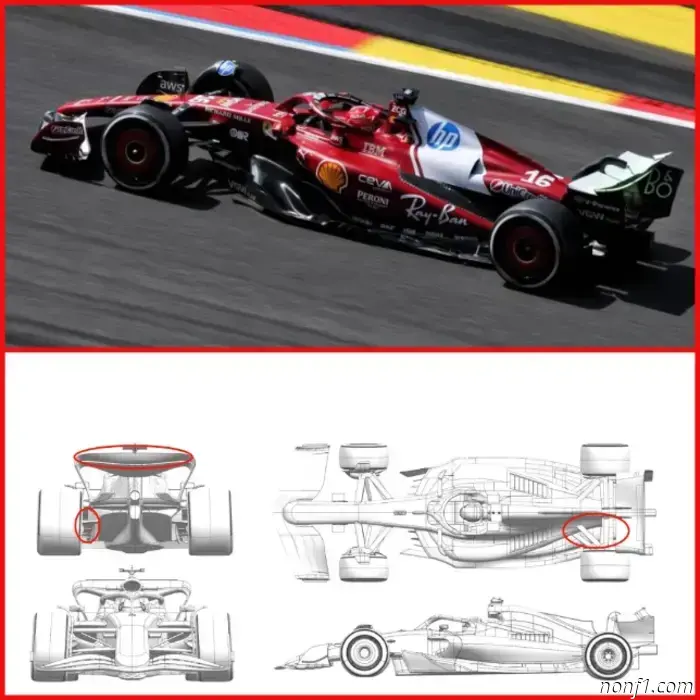
Technical innovations presented by teams in Spa
The second half of the season begins, and in fact, the moment has come when the modernization of this generation's equipment has been completed, but teams continue to present updates developed over the course of the year, essentially starting from winter testing.
By the Spa stage, eight out of ten teams had prepared various improvements, some with quite lengthy lists of changes. However, this cannot be said for the championship leaders...
McLaren
McLaren limited themselves to installing a new rear wing on Oscar Piastri's and Lando Norris's cars, designed for a lower level of downforce. According to the team, this rear wing unit is suitable not only for Spa but also for some other circuits and allows overall aerodynamic efficiency to be increased with a reduced drag coefficient.
Ferrari
The Italian team promised to prepare a modernized rear suspension for the Belgian stage of the season — and did so. In addition to this, the rear end of the car features optimized triangular suspension arm fairings, as well as a change in the geometry of the "lower and upper winglets," i.e., additional aerodynamic elements, according to Scuderia's explanations.
Of course, all of this is aimed at achieving the maximum possible aerodynamic efficiency. Moreover, in accordance with the characteristics of the Spa track, the cars are equipped with a rear wing designed for less downforce — specifically, the movable wing element is made narrower.
Red Bull Racing
The list of innovations reported by the Milton Keynes team includes five points. Primarily, modifications affected the front wing, where the geometry of the first two elements was adjusted to redistribute aerodynamic load, which also required adaptation of other components of this assembly.
Instead of two air intakes, the side pontoons now have one, and its upper part is made wider. The goal of these changes is to improve reliability. The team explained that this will enhance the efficiency of the cooling system.
Following these steps, the geometry of the engine cover was also adjusted.
Changes also affected the front suspension, where the geometry of the upper triangular arm fairings was revised, also aimed at better integration with the upgraded side pontoons.
In the "rear corner" of the chassis (a term used in Formula 1), the profile of the elements of the lower winglet arrangement near the rear wheel was modified to improve airflow stability.
Mercedes
On the W16's front wing, a wider second element has appeared — its width has been increased near the endplate. At the same time, the width of the front wing element was slightly reduced. This solution allows for the redistribution of vortex air flows formed in that area.
At the rear corner of the Mercedes, the placement of an aerodynamic element near the brake drum has been changed. Of course, Formula 1 brake systems are disc brakes, but the entire assembly in the casing — which contains specific brake components — is traditionally called a drum.
Aston Martin F1
Aston Martin's list of updates also includes five points, starting with a narrower adjustable front wing element. Accordingly, some other components of this assembly were modified, and overall, this was done to make the front wing blend more harmoniously with the shortened nose cone.
This will improve the efficiency of this critical aerodynamic area. The team also reports that the AMR25 is equipped with a rear wing and an additional rear wing designed for a lower drag coefficient, in line with the unique characteristics of the Spa track.
Alpine F1
The cars from Enstone are fitted with rear wings and additional rear wings that generate less downforce, thereby creating less drag.
Racing Bulls
The team reported modifications to the rear part of the car. This includes an upgraded rear wing designed for less downforce, revised geometry of the aerodynamic elements in that area (VCARB 02), and an improved diffuser.
Williams
The FW47 cars are fitted with a floor, the geometry of the Venturi tunnels' dividers has been revised in the front, and the edges of the floor have been reprofiled with additional aerodynamic elements of a more complex shape.
The configuration of the side pontoon air intakes has also been changed — this was necessary to ensure better aerodynamic interaction between this area, the newly redesigned floor, and the upgraded engine cover. Overall, these measures allow for optimal airflow distribution and increased efficiency of the new floor.

Other articles
 Piastri won the sprint qualification.
Oscar Piastri qualified for a sprint for the third time in his career...
Piastri won the sprint qualification.
Oscar Piastri qualified for a sprint for the third time in his career...
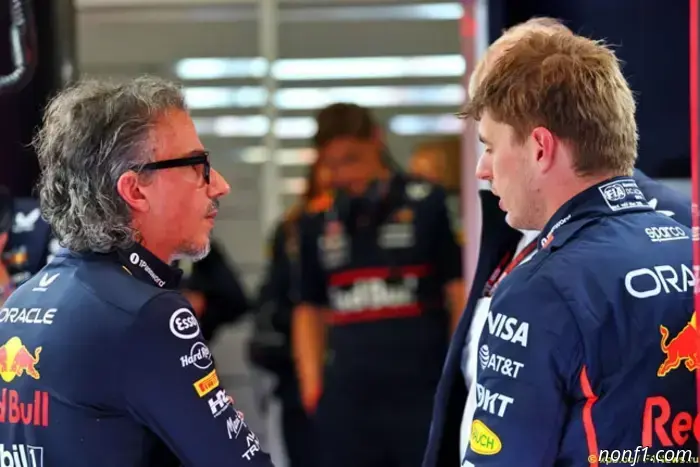 Mekis explained how he plans to keep Verstappen.
Red Bull Racing's new team principal, Laurent Mecis, explained the steps he plans to take to prevent Max Verstappen from being tempted to leave the team.
Mekis explained how he plans to keep Verstappen.
Red Bull Racing's new team principal, Laurent Mecis, explained the steps he plans to take to prevent Max Verstappen from being tempted to leave the team.
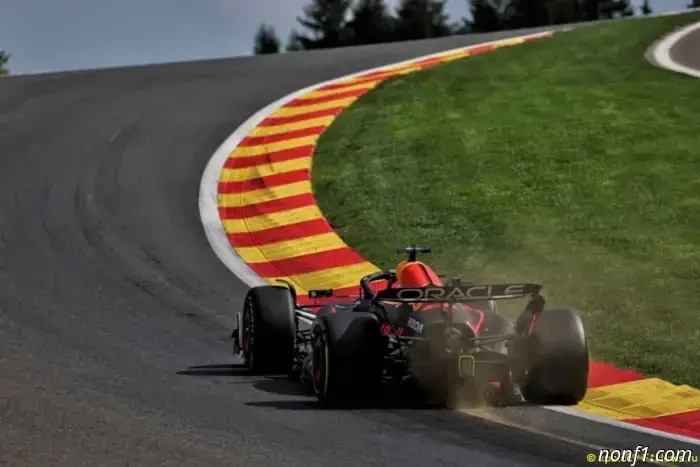 Max Verstappen: The gap to the leader is very large
Max Verstappen posted the second fastest time in the Belgian Grand Prix sprint qualifying. The reigning world champion is pleased to have beaten one of the McLaren drivers, but is dissatisfied with nearly half a second behind the pole sitter.
Max Verstappen: The gap to the leader is very large
Max Verstappen posted the second fastest time in the Belgian Grand Prix sprint qualifying. The reigning world champion is pleased to have beaten one of the McLaren drivers, but is dissatisfied with nearly half a second behind the pole sitter.
 Formula 2: Alex Dunn confidently won in Spa.
The qualification on the Belgian track was won by Alex Dany, a Rodin Motorsport driver and member of the McLaren youth team...
Formula 2: Alex Dunn confidently won in Spa.
The qualification on the Belgian track was won by Alex Dany, a Rodin Motorsport driver and member of the McLaren youth team...
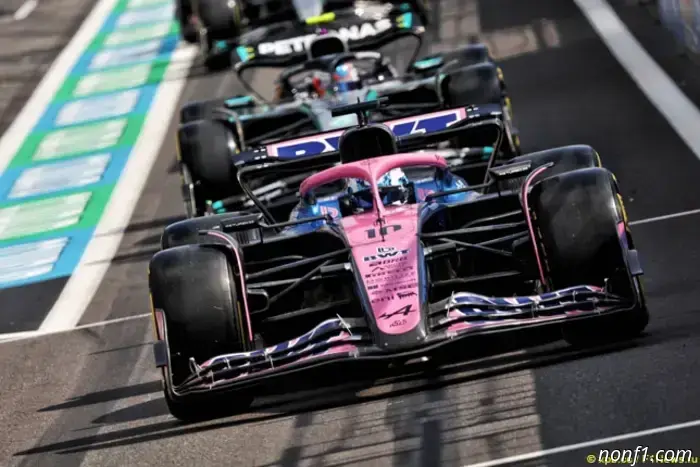 Gasly: We reduced the downforce for speed.
Pierre Gasly posted the eighth fastest time in the Spa Grand Prix sprint qualifying. After the session, the Alpine driver mentioned that the team had adjusted the downforce settings after practice to increase the car's speed on the straights.
Gasly: We reduced the downforce for speed.
Pierre Gasly posted the eighth fastest time in the Spa Grand Prix sprint qualifying. After the session, the Alpine driver mentioned that the team had adjusted the downforce settings after practice to increase the car's speed on the straights.
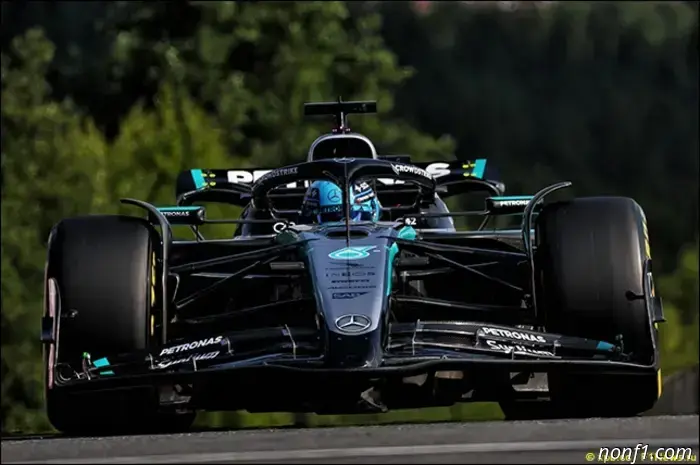 George Russell: The car was damaged.
In the sprint qualification, Mercedes drivers did not reach the final – Kimi Antonelli was eliminated in the first session, George Russell in the second...
George Russell: The car was damaged.
In the sprint qualification, Mercedes drivers did not reach the final – Kimi Antonelli was eliminated in the first session, George Russell in the second...
Technical innovations presented by teams in Spa
The second half of the season begins, and in fact, the moment has come when the modernization of this generation's equipment has been completed, but teams are introducing updates that were developed over the course of a year, essentially starting from the winter tests...
